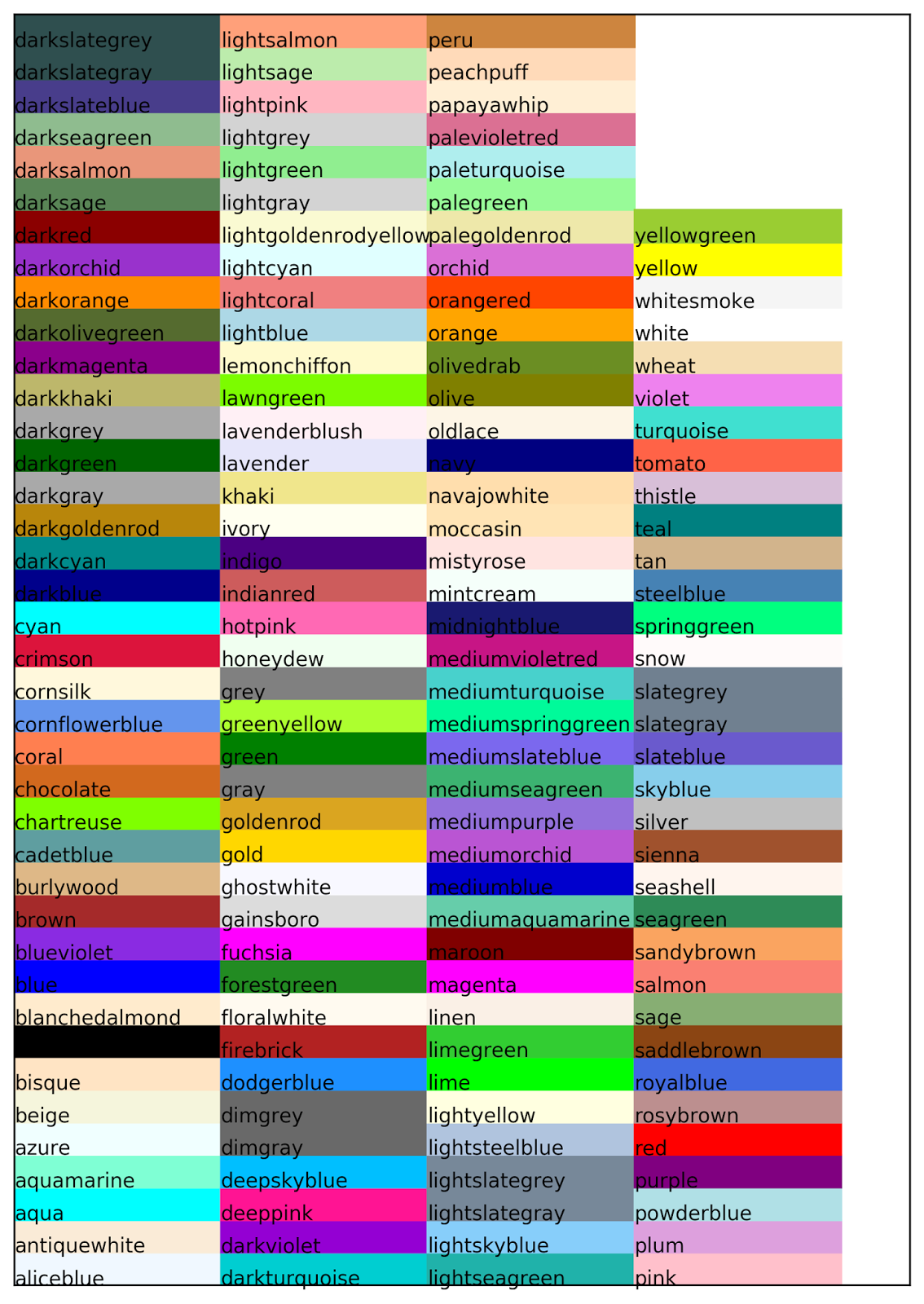
So when we need to in the future, we just have to call the function out for usage.
#PYTHON COLORS CODE#
Before moving on to the next challenge, complete this one.īelow is an example of code refactoring using the Define function in Python to find the force (F) required to move an object of mass (m) with an acceleration (a) given by the formula “F = m x a”.īecause we are performing a repeated task, it's a good idea to use a function instead of using only the conditional statement. Refactoring has no impact on the system's output. Don't begin adding functionality while refactoring is still being done. Check to see if everything is working after making a small code change. Divide it into several more compact portions. The modification is riskier the more drastic it is. No matter how disciplined you are, eventually, you'll introduce bugs. If you don't have tests that verify that the before and after are equivalent, you can't be certain you didn't break the code. Without tests, refactoring code is, to put it bluntly, gambling. If you want to get the most benefit from restructuring your code, you should keep the following in mind: Refactoring Best Practices – with Python Examples You can do this by keeping the code understandable. Whatever you do, avoid creating a separation between technical value and business value (creating the feature). Adding comments for me entails leaving the code in a better state than when I found it. But refactoring, in my opinion, is an essential component of working on any process. The refactoring stage is often difficult for teams to include in their process. If done correctly, refactoring your code makes it easier for your team members to understand your code and the changes you've made.
#PYTHON COLORS SOFTWARE#
Refactoring is a common activity for software development teams. Even if you didn't write the code, refactoring it gives you a better grasp of what it does. Refactoring Broadens Your Knowledgeįinally, refactoring is a method of active learning. Also, people who read it in the future will be grateful. As a result, it's in your best interest to keep things as simple as possible, which considerably improves maintainability. It is common knowledge that developers read code far more frequently than they write it. You can also make the code easier to understand by improving the design. If you refactor properly, your code will be more easily understandable afterwards. It Gives You a Better Understanding of the Code You can improve things by refactoring your code regularly to demonstrate a better understanding of the program or code you're working with. Then, abstractions are no longer as pure as they once were. As you add additional functions, the relevance of the program may be affected. Refactoring helps you improve the design of your software because developing applications is a difficult task. Why Do You Need to Refactor Your Code? It Helps Improve Your Code/Program Refactoring is the process of making small changes or adjustments to your code without affecting or changing how the code functions while in use.

Refactoring means organizing your code without modifying its original functionality. We'll go over why you need to refactor your code, the advantages of code refactoring, and some best practices for code refactoring. If you want to quickly see what a palette looks like, use the function sns.In this article, I will discuss what code refactoring is. You can also build your own palettes by passing in a list of colors in any valid Matplotlib format, including RGB tuples, hex color codes, or HTML color names. This function can take any of the Seaborn built-in palettes (see below). You can build color palettes using the function sns.color_palette().


Making intentional decisions about the details of the visualization will increase their impact and set your work apart.

Styling is the process of customizing the overall look of your visualization, or figure. While visualizing communicates important information, styling will influence how your audience understands what you’re trying to convey.Īfter you have formatted and visualized your data, the third and last step of data visualization is styling. When creating a data visualization, your goal is to communicate the insights found in the data.


 0 kommentar(er)
0 kommentar(er)
